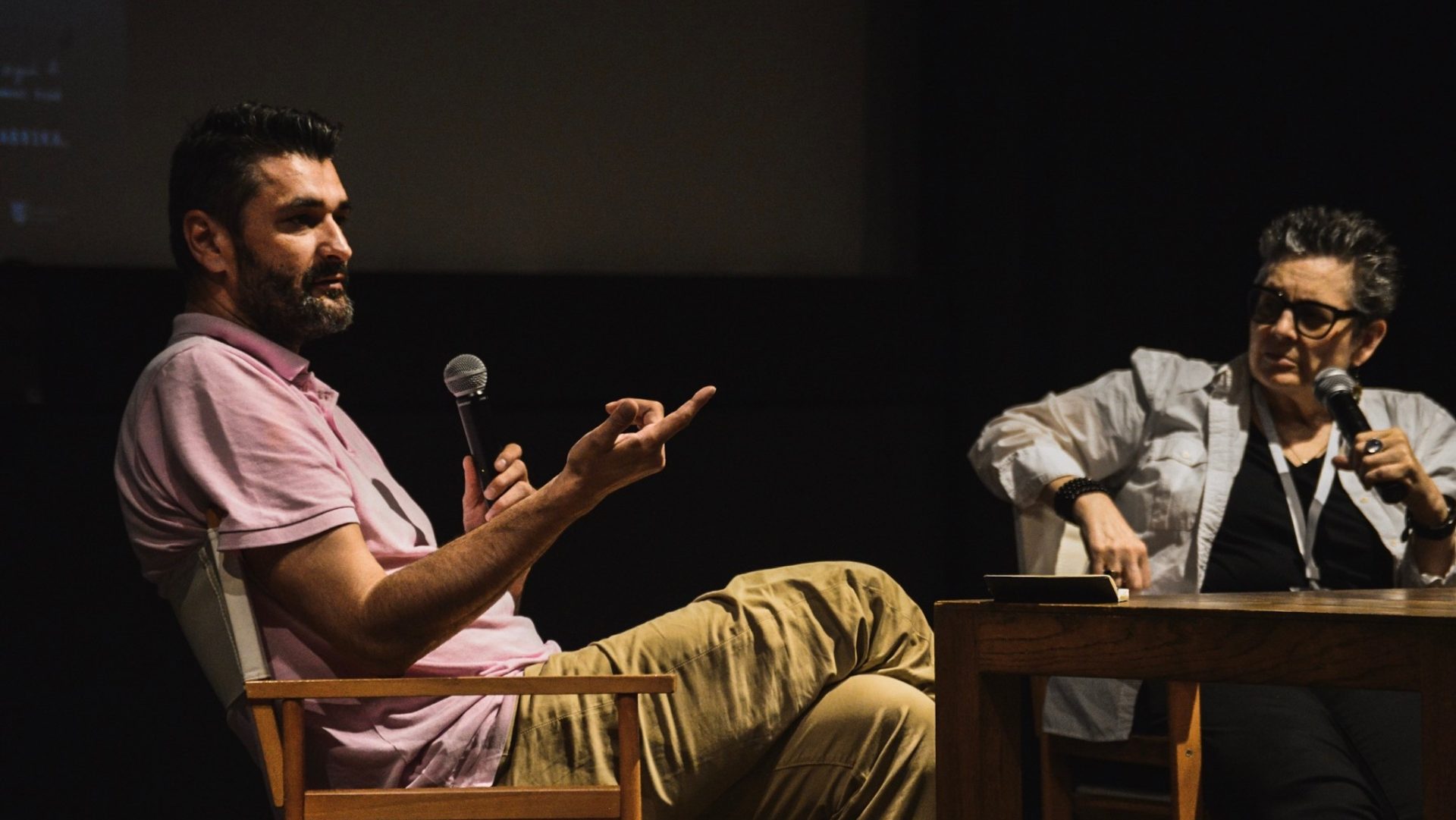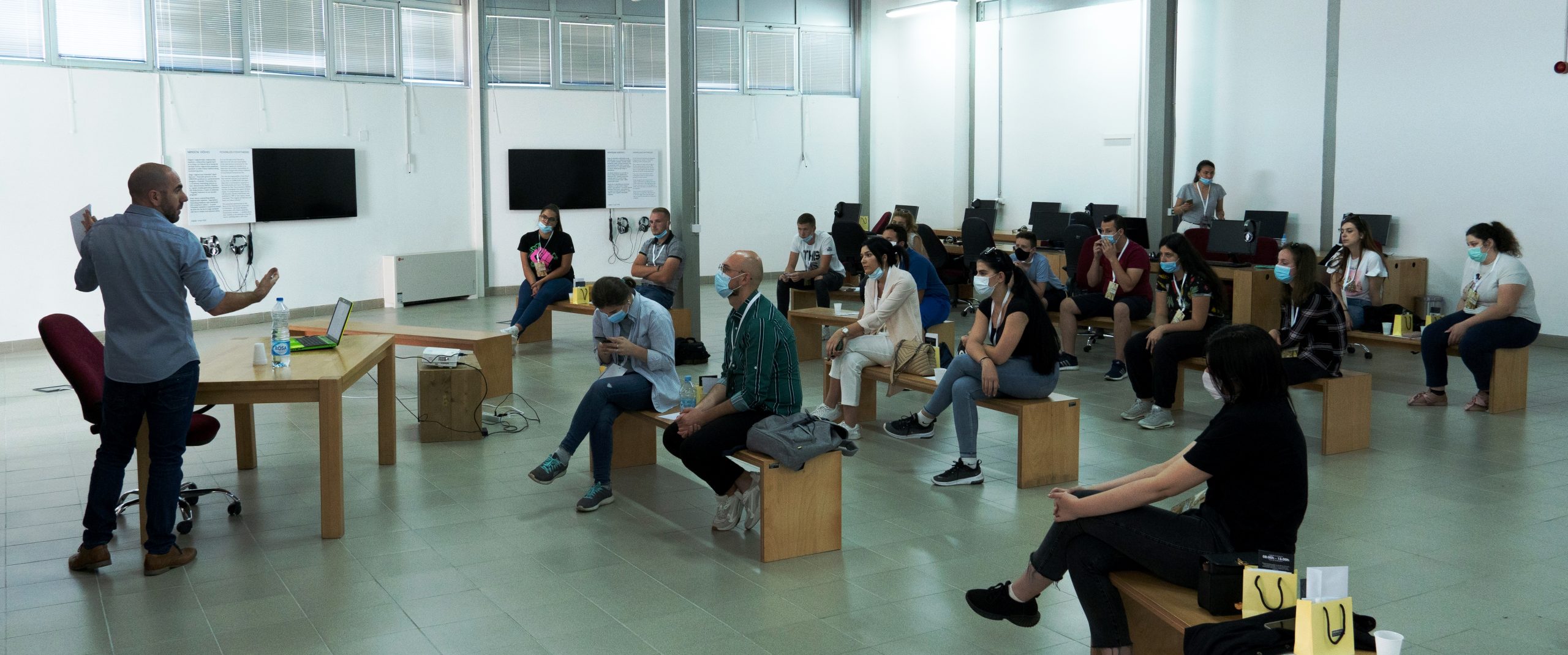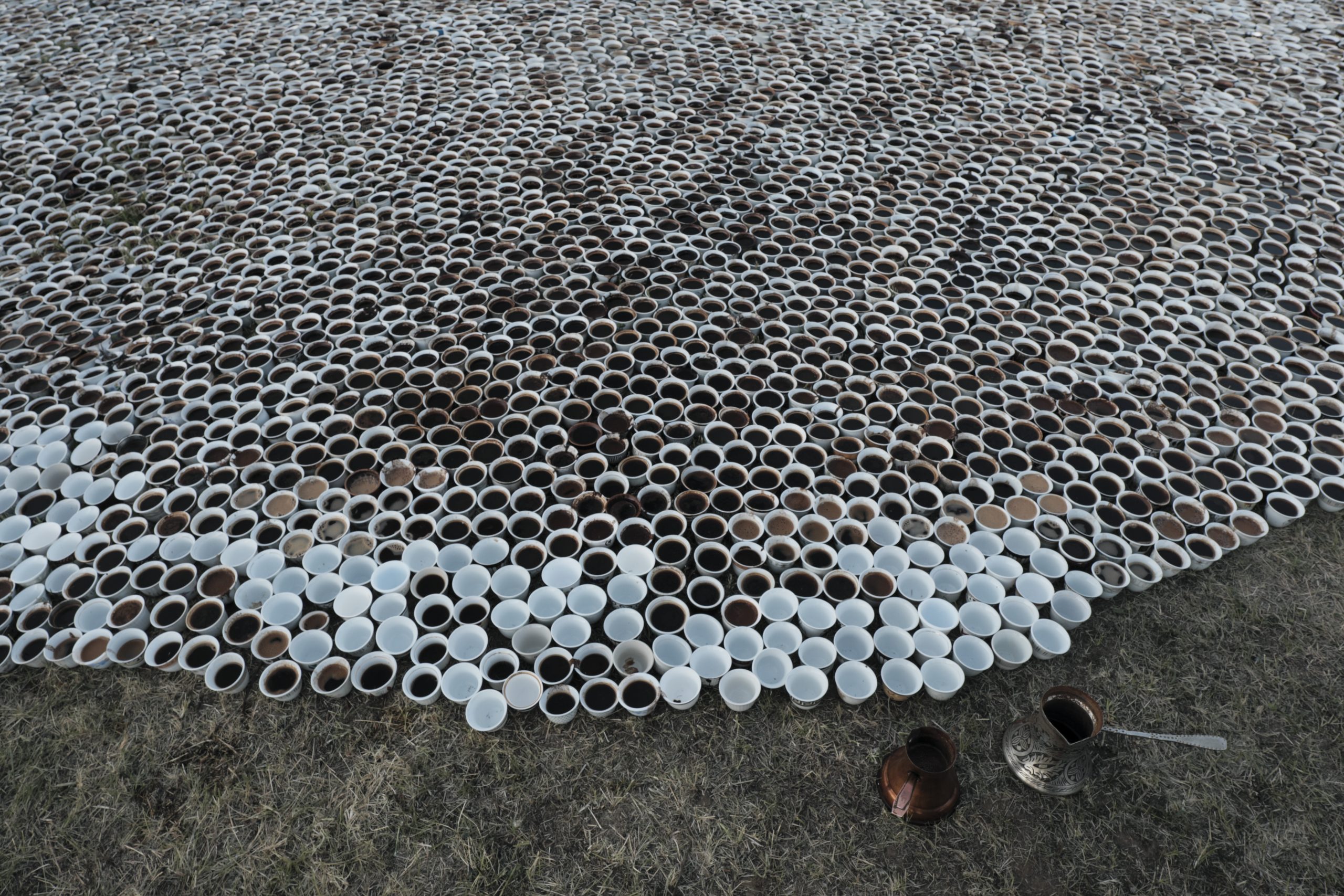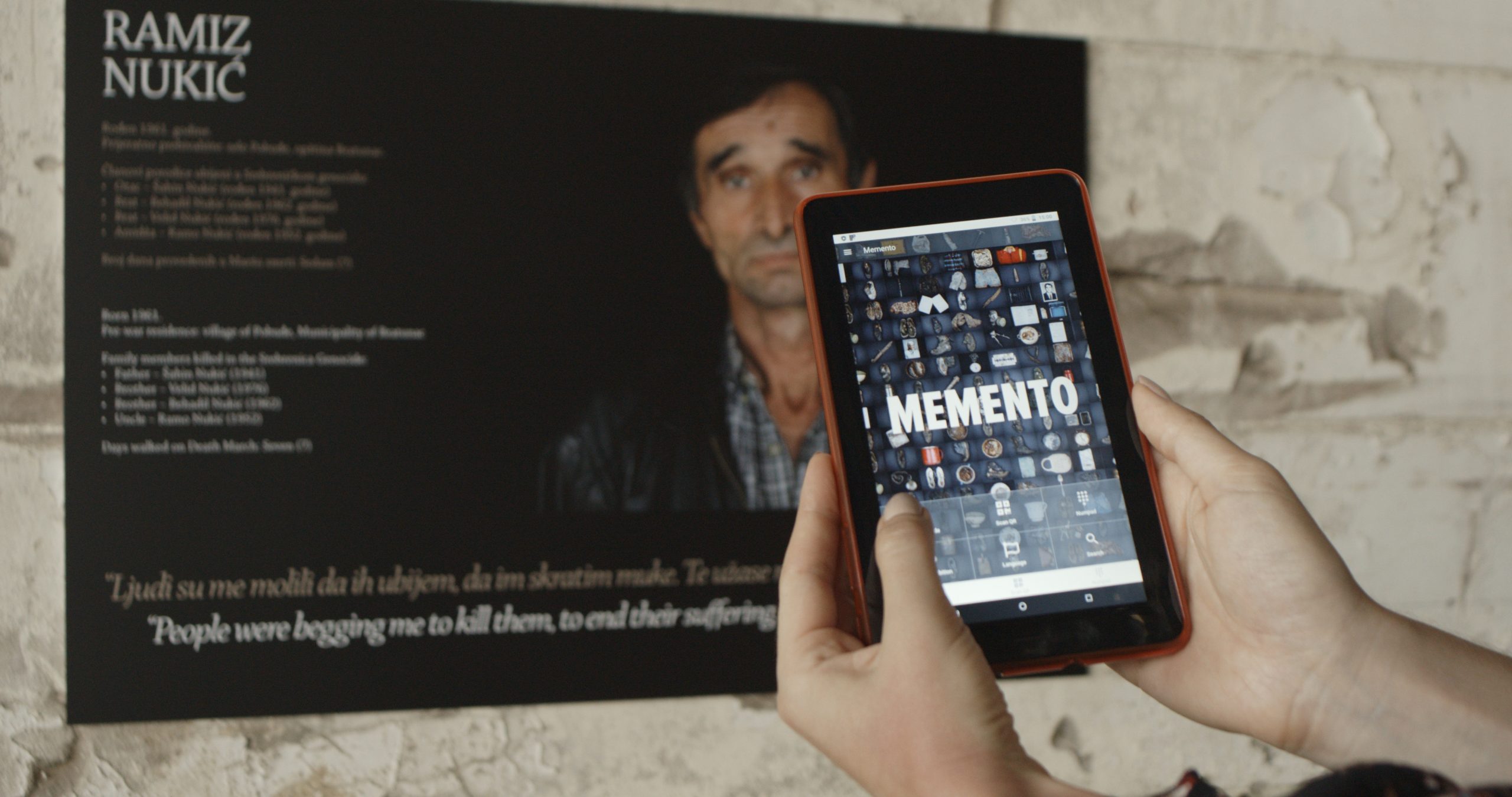
“I see the future of the Srebrenica Memorial Center as a gravitational center [for] the experience of one nation during the 1990s, with its own archive, research and museum capacities for the commemoration of the victims of Srebrenica, Sarajevo and Ahmići…because we are the generation that should give this institution a chance to survive and be the best for everything that comes in the future.”- Emir Suljagić, Director of the Srebrenica Memorial Center
Emir Suljagić grew up in Bratunac. He was 17 when his family fled from the Drina Valley in 1992, escaping ethnic cleansing and taking refuge in Srebrenica. He learned English by himself and became a translator for the United Nations forces stationed in the city.
After the war, Suljagić attended the University of Sarajevo and the University of Bologna and received his doctorate from the University of Hamburg. His book, “Postcards from the Grave,” is the first account of the Srebrenica Genocide to be published in English by a Bosnian who survived the Genocide. So far, it has been translated into nine languages.
Suljagić was appointed director of the Srebrenica Memorial Center in October 2019. During 2020, his team in Srebrenica gathered numerous artists and organizations from all over the world to successfully organize the 25th commemoration of the Srebrenica Genocide, despite the challenges caused by the pandemic.
The Memorial Center: A Place for Learning and Remembering
The future of the Srebrenica Memorial Center will be researching and documenting the response of the former Yugoslav countries to the 1995 genocide.
“I would like to work with civil society organizations and authorities from Slovenia to Northern Macedonia. I want to see how the former Yugoslavia can pay tribute to the victims of Srebrenica and find a way to continue living together,” Suljagić said.
In the next three years, the Memorial Center plans to implement a comprehensive program with a number of activities. One of the new programs is the creation of personal files for those persons killed during the genocide in Srebrenica.
“For me personally, our new project, which is supported by funds [from] the local authorities, is very important. We want to document and form a single database on human losses in and around Srebrenica from May 1992 to July 1995. I believe this is the first step towards expanding the narrative about Srebrenica, because people here have been victims of genocide for three and a half years, not just five days in July 1995, which is unfortunately the current narrative.”

As Suljagić explains, for the Memorial Center, it is extremely important to preserve and renovate the infrastructure on the site of the Center.
“The memorial room, for example, is in a rather dilapidated condition, that is, the complete physical infrastructure is in a dilapidated condition, and I hope that we will soon begin the renovation of the administrative building. We are already working on renovating the library and building the archives, and in the near future we will be able to inform the public that we have found a donor and that the repair of the roof on our main hall is about to start. When we finish these renovations, we will renew the heart of this institution,” Suljagić explains.
Another goal of the Center is to give young people from Srebrenica the opportunity to actively work on building and preserving historical memory.
“The Memorial Center should not exist unless it includes the generation of children of those who lost their lives here, the generation of children who may have been born after that, but whose lives are marked by Srebrenica,” says Suljagić
Although funds for including young people are limited right now, Suljagić hopes that in the coming years more young people will come work for the benefit of Srebrenica.
“And that’s why I will do everything in my power to increase the number of young people in the Memorial Center every year, because we are the generation that should give this institution a chance to survive and be the best for everything that comes in the future,” he says.
When asked about daily life in Srebrenica, Suljagić says that memories and feelings come back every day through conversations with friends and acquaintances.
“I am someone who was here in 1995, someone who lost family members and survived, who knows many people who lost their loved ones – none of us have survived Srebrenica and remained intact.”

Although he spent part of his life getting educated abroad, Suljagić emphasizes that he never actually left Srebrenica, and that he went everywhere with the goal of bringing “at least one small piece to the victims; if not justice, than at least satisfaction.”
“I still do not live here in the full sense. I’m here two to three days a week, and the other three days I’m on the road. And that is because I can’t find money, people or knowledge here to make this institution what it should be,” he explains.
The Memorial Center is a state institution established by the Office of the High Representative in Bosnia and Herzegovina (BiH). The law that established the Center clearly sets its goals, and envisioned it primarily as a cemetery and not a large Memorial Center.
“What we want to create is a broader vision and strategy [for] the Memorial Center, which intertwines its management structures with the families of survivors and victims. I see the future of the Srebrenica Memorial Center as the gravitational center for the experience of a nation during the 1990s, with its own archives, research and museum capacities, capable of recording not only what happened in July 1995, but also the period before 1995 which led to genocide and suffering.”
Celebrating the 25th Anniversary of the Genocide: Achievements and Challenges
The commemoration in Potočari in July this year was attended by 47 heads of state, prime ministers and foreign ministers from around the world. The programs implemented on the eve of July 11 were more diverse than ever before.

“By far the hardest part of this was deciding how the commemoration would take place. We thought about whether it would [use] traditional commemoration practices as in previous years, or whether we would ‘move’ the commemoration into a completely virtual space. And the third possibility, which we opted for, was to combine traditional practice with virtual events. I think we made the right decision,” said Suljagić.
“I believe that by doing so, the commemoration touched more people than ever before. The novelty is that this year, for the first time, we had a very pronounced artistic dimension in the celebration, and I plan to continue with it in the future.”
One of the art programs was the exhibition, “Exodus,” which was by the most famous Bosnian painter and graphic artist, Safet Zec.
“The second art segment is an exhibition by a group of war photojournalists, including Tony Birtly, who visited Srebrenica in 1993. This exhibition provided visitors with a unique insight into the siege of Srebrenica and the situation in the municipality in the period from May 1992 to July 1995,” Suljagić explains.
Another art project originated from an idea by the Memorial Center and the Post-Conflict Research Center (PCRC). It is a photographic exhibition entitled “Memento: Fragments of the Srebrenica Genocide,” which presents objects donated by persons who survived the genocide in Srebrenica and the families of the victims for permanent display and storage at the Memorial Center.

During the commemoration this year, the first summer school in Srebrenica took place. It was entitled, “Dealing with the past to rethink the future.” During the summer school, which was also implemented in cooperation with PCRC, 25 young people from all parts of BiH had the opportunity to learn from experts, academics and artists working in the field of human rights, transitional justice, historical memory, and mass crime prevention.
“This year, the art exhibition, ‘Što te nema,’ arrived in Srebrenica, during which Aida Šehović, together with young activists and participants of our school, lined up more than 8,372 cups of coffee that remained undrunk in memory of the victims of the Genocide.”
A social media campaign dedicated to survivors was also launched. It was called “12 days of remembrance,” and a number of other activities, many of which will be continued in the future, were held.
“The other day I was with one of my good friends, who said that what he feels most of the time is the desire to [trade] everything he has now for 1992 and 1993, including suffering and hunger and everything…just to be with [his] loved ones once again.”
It is this feeling that leads Suljagić and his team to create a community in the Memorial Center, where survivors will be able to remember their loved ones and always have a place to preserve their memories.
“We want the Memorial Center to be a place where the events and the period that defined and determined the future of this country will be commemorated for a very long time,” he concludes.
Preparations for the 26th anniversary of the Srebrenica Genocide are already underway, and the perseverance and commitment of people like Suljagić remains an inspiration and an example of how one person’s vision can trigger historical change and bring new hope for the future.






